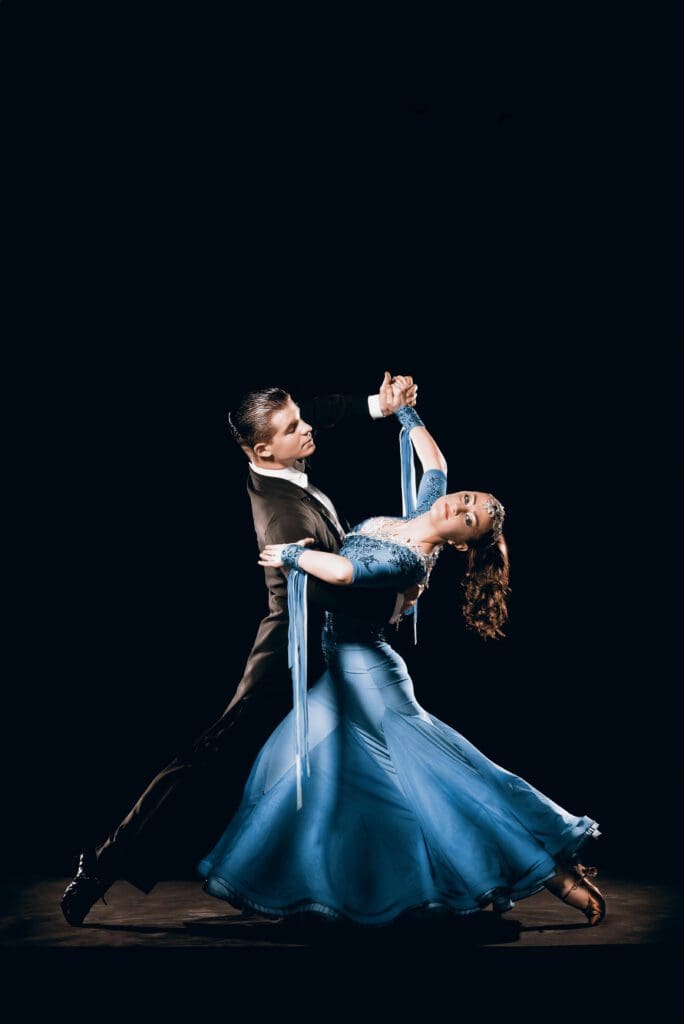Waltz
Waltz History
Origins and Early Development:
- The Waltz originated in the 16th century as a folk dance from the rural regions of Austria and Bavaria. Its name likely comes from the Latin word “volvere,” meaning to turn or roll, reflecting the dance’s spinning nature.
- It evolved from dances like the Landler and the Dreher, popular among peasants. These dances featured close contact between partners, which was revolutionary at the time.
18th and 19th Centuries:
- The Waltz entered the ballrooms of the Viennese elite in the late 18th century. It was seen as scandalous due to the close embrace between partners, contrasting sharply with the formal, stately dances of the era.
- By the early 19th century, composers like Johann Strauss I and his son, Johann Strauss II, popularized Waltz music, making Vienna the “Waltz Capital” of the world.
- The Waltz spread across Europe and to America, where it was initially met with resistance but gradually gained acceptance.
Evolution of Form and Style:
- The original form of the Waltz was much faster and less structured than what we see today. It involved a simple rotating movement, where couples spun around the dance floor.
- Over time, the Waltz slowed down and became more refined. The introduction of the “closed position” (partners facing each other with a closer hold) was a significant evolution in dance.
- The 19th century saw the development of different Waltz variations, such as the Boston Waltz and the Viennese Waltz, the latter known for its quick tempo and fluid turns.
20th Century to Present:
- The Waltz continued to be popular in the 20th century, though it faced competition from newer dances like the Foxtrot and the Tango.
- In competitive ballroom dancing, the Waltz is categorized as a Standard or Smooth dance, known for its elegance, graceful movements, and expressive rise and fall action.
- Today, the Waltz remains a staple in both social and competitive dancing, admired for its romantic quality and musicality.
Waltz Characteristics
- The Waltz is distinguished by its unique characteristics, including a consistent rise and fall motion and a sway, creating a smooth and gliding movement across the dance floor. Its elegance and grace are matched by a romantic and occasionally melancholic ambiance.
Waltz Music Information
- Time Signature: The Waltz is set in a 3/4 time signature, which means there are three beats in each measure of music.
- Tempo: The tempo of a Waltz typically ranges from 30 to 32 measures per minute (mpm). This creates a moderately slow, flowing rhythm that is easy to dance to.
- Rhythmic Count: The basic rhythmic count of the Waltz is “1-2-3, 1-2-3,” with each number representing a beat in the measure. This count is consistent throughout the dance, giving the Waltz its steady and rhythmic flow.
- Beat Value: Each beat in the measure holds equal value, contributing to the uniformity and balance of the dance’s rhythm.
- Alternate Teaching Count: In some teaching methods, an alternate count of “123, 456” is used. This can be helpful for dancers to maintain the rhythm over two measures of music.

Which Ballroom Dance Is Your Favorite? Your Passion? Your Dream?
Menu